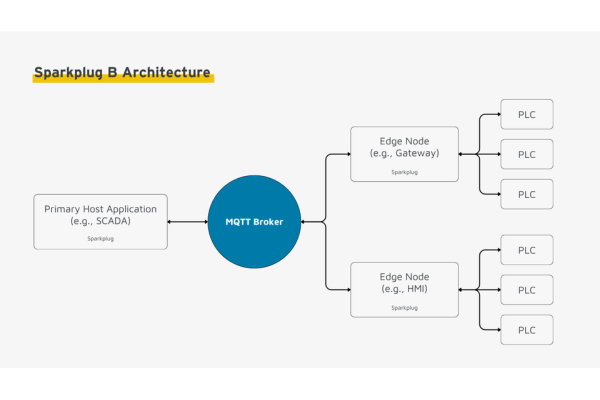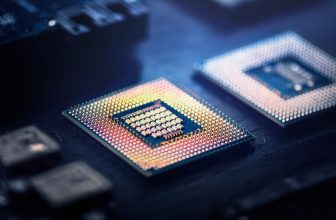
MQTT Unified Namespace provides a future-oriented approach to real-time industrial communication and data exchange. It also facilitates a seamless integration between OT (operational technology) and the information technology system.
This combination makes it easier to maintain standardized data naming, communication, and structure, leading to improved interoperability and data-driven decision making in the current industry environment.
This blog post explored how a combination of MQTT Unified Namespaces helps with better data exchange in the Industrial Internet of Things.
What is Unified Namespace (UNS)?
A Unified Namespace or UNS is a concept in the IIoT landscape. It provides a standardized way of naming data, devices, and resources within a single industrial network.
It works as a central hub for data collection and distribution and breaks down silos helping them enable better and simpler access to data.
In a more modern sense, UNS is a concept in the industry 4.0. It facilitates a business with a standardized and accessible means to manage, organize, and share information across several organizational touchpoints.
It’s a single source of truth that ensures everyone knows where to find the data they are looking for, with processes on how to use it. It’s the central hub for data exchange that also enables seamless integration and communication among users in real time.
Benefits of Unified Namespace
So, organizations can benefit from a Unified Namespace in the following ways –
Standardization
UNS ensures data representation, simplifies data exchange between systems, and sets up a standardized process for data organization and sharing in the organization.
Better Agility
Different users across several layers of the organization can use data through UNS, making it easier for them to decide faster, test at scale, and deliver products smoothly.
Improved Decision-Making
Although we have already talked about decision making using UNS, it’s important to note that it provides a contextualized view of the industrial process. This view facilitates much faster decision-making. Integration of AI makes it even faster than the traditional methods.
Scalability
Through centralization of data access, UNS allows for easy scaling of applications and systems, avoiding complex and system-specific integrations.
A UNS often organizes data as per machine type, process step, or functional area. This process allows different applications to access data based on the requirement.
What is MQTT Sparkplug?
MQTT Sparkplug is a process built using the MQTT standard that standardizes and streamlines data exchange in industrial settings.
Through MQTT Sparkplugs, it’s easier to communicate seamlessly, compress data, and process faster data transfer within the IIoT (Industrial Internet of Things).
Sparkplug provides a standardized process for communicating with industrial devices and applications, which also enables them to make decisions using data insights. It’s an open source protocol that is widely adopted in the industry.
Benefits of MQTT Sparkplug
The unified data model in IIoT provides several operational and internal communication benefits. However, we must first understand the benefits of MQTT to recognize the full extent of benefits it provides to the IIoT settings
Simplified OT-IT Data Integration
Sparkplug simplifies the integration of OT systems using IT systems through a standard MQTT topic structure for data exchange.
Deterministic State Management
Through Sparkplugs, it’s easier to ensure a reliable and more predictable data flow through the use of a controlled message format.
Scalability
With the use of Sparkplugs, it’s easier to include and handle large-scale industrial networks with various devices. MQTT Unified Namespace becomes a more capable combination thanks to the ease of scalability of the MQTT Sparkplugs.
Sparkplugs are a messaging protocol that helps with data transmission within the UNS. It also ensures that the data gets delivered reliably and in a standardized format.
Benefits of Combining UNS and MQTT Sparkplug
When combined, both UNS and MQTT Sparkplug can provide a different set of experiences for users. This combination provides a seamless data flow and interoperability between OTs and IT systems.
Sparkplug enhances MQTT’s capabilities by providing a standardized process for structuring MQTT topics. It enables a more efficient and organized way to handle data within the UNS.
The two main benefits of this combination are –
- Standardized data representation with better interoperability.
- Enhanced control and data management.
Here are some benefits of combining UNS and MQTT Sparkplug –
Enhanced Data Exchange
Data exchange between the OT and the IT systems becomes more seamless and easier through a strong combination of UNS and Sparkplugs.
Improved Decision-Making
Both UNS and MQTT Sparkplugs can help enable better data-driven decision-making. It can also lead to improved efficiency, productivity, and overall performance.
Simplified System Management
System management and troubleshooting issues become easier with UNS and MQTT Sparkplugs combined. The reliable data flow facilitates better system management within the IIoT.
Faster Digital Transformation
The future of real-time data exchange within organizations will become a lot easier with UNS and Sparkplugs facilitating digital transformation in an industrial setting. This is only possible with UNS and Sparkplug combining and streamlining data exchange, improving decision-making in the process.
Conclusion
In essence, we can conclude that UNS and MQTT combined can create a robust and scalable platform enabling real-time data exchange in the IIoT. This paves the way for a more efficient organizational operation. From providing Real-time manufacturing analytics to streamlining data, MQTT Unified Namespace provides a lot more than we can thank it for.
Organizations can communicate, streamline, manage, and exchange data more flexibly in real time. This combination creates a more robust and scalable platform that helps with better operations within the industries. As a result, organizations start to operate more efficiently and manage data-driven industrial operations.






